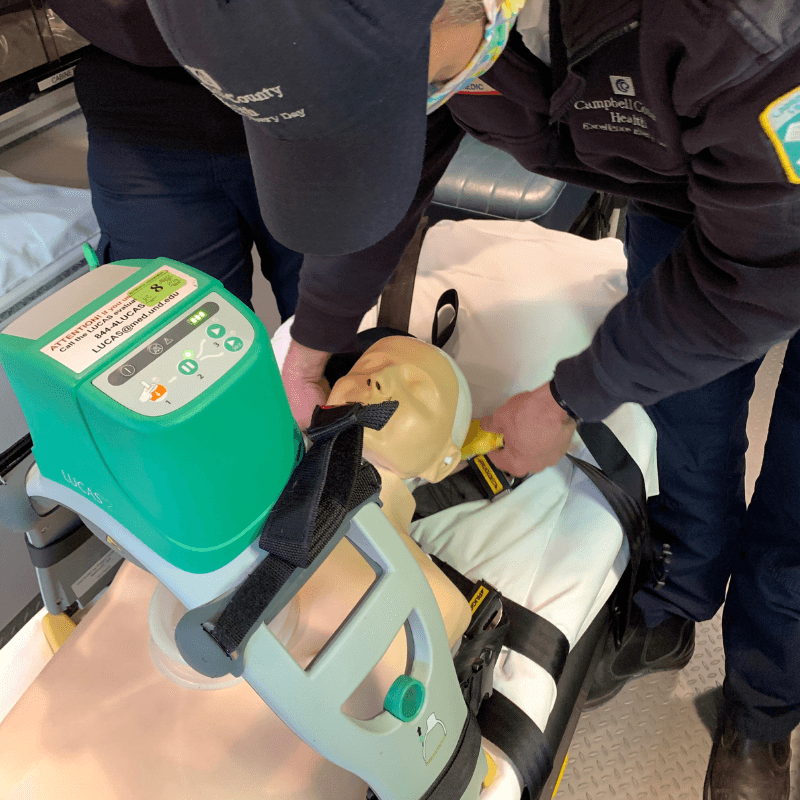
Thanks to a nearly $220,000 grant from the
Leona M. and Harry B. Helmsley Trust, Campbell County Health will receive 18
LUCAS mechanical CPR devices to protect frontline healthcare workers caring for patients during the
COVID-19 pandemic and beyond.
The gift enables CCH to place these devices in all patient care areas at
Campbell County Memorial Hospital including nursing units, the
Heptner Cancer Center,
Dialysis unit,
Surgical Services and each
ambulance. These automatic
CPR devices can be crucial lifesavers in rural areas where there are fewer
paramedics and longer ambulance rides to hospitals.
“We greatly appreciate this gift from the Helmsley Trust,”
said Chris Beltz, CCH Emergency Medical Services Director. “The
LUCAS device does the chest compressions without touching the patient.
Having more of these units here can potentially save lives, and protect
both patients and healthcare workers.”
The LUCAS® Chest Compression System (LUCAS®) delivers consistent
and uninterrupted chest compressions, which allows providers to concentrate
on other equally important aspects of patient care while giving patients
the best opportunity of survival. Mechanical CPR has been adopted by first
responders due to its ability to deliver extended CPR in compliance with
American Heart Association guidelines. Multiple studies have demonstrated
equivalence to high-performance CPR, as well as increased provider safety
and higher rates of adequate compressions for patients in transport situations.
A total of $4,711,481 in funding will be distributed across five upper
Midwestern dates to pay for 367 LUCAS mechanical CPR devices to be deployed
to hospitals. The Helmsley Charitable Trust is partnering with medical
facilities in South Dakota, North Dakota, Montana, Worming and Nebraska
to ensure the devices are in place within two weeks from the initial concept,
before the projected peak of COVID-19 cases.
Recently, the Department of Defense COVID-19 Practice Management Guide
identified the LUCAS chest compression system as the best practice for
managing patients in cardiac arrest to reduce the risk of exposure to
healthcare providers.